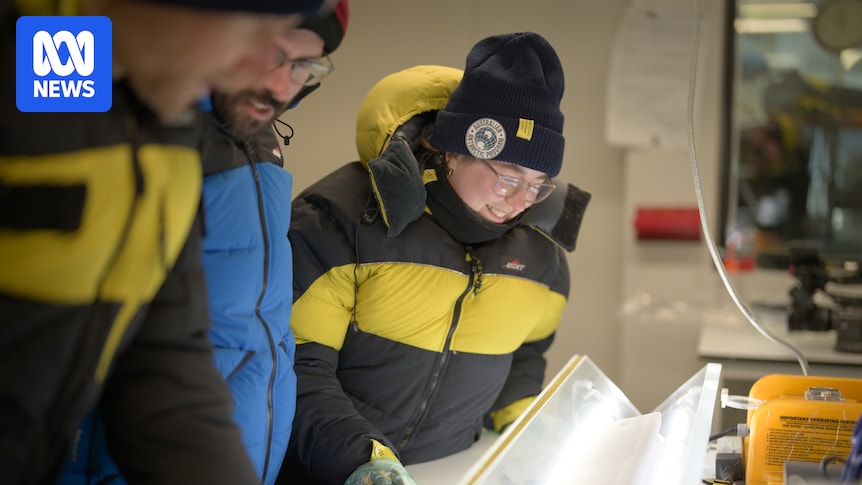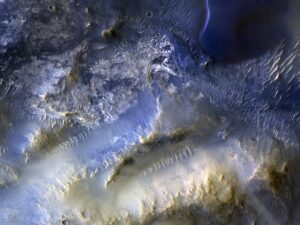
Inside an ice-cold laboratory in Hobart, where temperatures hover nearly 20 degrees Celsius below zero, scientists clad in thick puffer jackets have embarked on a groundbreaking mission. Carefully, they extract a one-meter cylinder of ice from an insulated box recently delivered from Antarctica. This marks the beginning of a significant scientific endeavor.
“In the freezer lab today, we’re cutting the first samples from the ‘Million Year Ice Core’,” explained Joel Pedro, the lead scientist on the project. “And that’s a big moment for us.”
For nearly a decade, Pedro and his team from the Australian Antarctic Program have meticulously planned this ambitious project. The aim: to extract the world’s oldest continuous ice core from deep beneath the Antarctic ice sheet. This core, they hope, will unlock secrets of Earth’s climatic past.
The Significance of Ice Cores
Ice cores are invaluable to climate scientists. They serve as time capsules, preserving tiny bubbles of air trapped over thousands, even millions, of years. These bubbles offer a pristine snapshot of the atmosphere from the time the snow was transformed into ice.
“More than any other archive of climate in the past, [ice cores have] a range of information that helps you to understand the changes in the total climate system,” Dr. Pedro elaborated.
“Those air bubbles are a sample of the atmosphere in the past that was trapped as snow fell and was then compressed into ice,” Dr. Pedro said.
The ice currently under analysis in Hobart comes from a depth of 150 meters, dating back nearly 4,000 years. While significant, this is merely the beginning of a much larger mission. The team aims to reach a depth of 3,000 meters, potentially unearthing ice as old as two million years.
The Gruelling Journey to Dome C North
Reaching this point has been a monumental logistical challenge. The drill site, Dome C North, is located 1,200 kilometers from the nearest Australian station in Antarctica and sits 3,000 meters above sea level, where temperatures can plummet below -50 degrees Celsius.
Transforming this remote location into a deep field station required a 10-person team using six tractors to haul nearly 600 tonnes of equipment across the frozen landscape. Traverse leader Chris Gallagher described it as “the biggest traverse that we’ve undertaken” in the Australian program.
“It’s a very specialized team that has extremely high skills, but also that ability to really get on with each other and care for each other,” Gallagher said. “We were like a big family [on] this trip.”
After enduring multiple blizzards, the team reached Dome C North 18 days after departing from Casey Station. Once the site was prepared, a separate team of scientists flew in to begin drilling and processing the ice core.
Celebrating Scientific Milestones
The extraction of the first ice section was a momentous occasion. Chelsea Long, a field assistant, described the experience as “a real joy.”
“It was really celebratory when it came out and just finally to see this happening and to touch the ice and measure it, was a real joy,” she said.
For Dr. Pedro, this milestone was a culmination of years of hard work and resilience, especially following delays caused by the COVID-19 pandemic. “The start to the project was easily the most exciting thing that’s happened in my science career,” he noted.
Despite the excitement, Pedro remains focused on the long road ahead. “But at the same time, it’s just the start of the project — we’ve [still] got 3 kilometers to go.”
Unlocking Climate Mysteries
Currently, the oldest ice core on record dates back nearly 800,000 years. However, a European team, Beyond EPICA, recently extracted ice from a depth of 2,800 meters, expected to date back almost 1.2 million years.
The Australian team plans to drill over 200 meters deeper than Beyond EPICA, potentially reaching ice that dates back up to two million years. Such data could provide unprecedented insights into Earth’s climatic history.
“If we can get this record − and the modeling suggests [Dome C North] is the best site in Antarctica for recovering [the] oldest ice − then we’ll produce data that will stand for decades as the measurement of Earth’s atmosphere [and] greenhouse gas levels through that period,” Dr. Pedro said.
If successful, this data could help scientists understand why Earth’s ice ages became significantly longer about a million years ago, a mystery that remains one of the greatest challenges in climate science.
The team plans to resume drilling during the 2025/26 summer, with the goal of reaching the 3,000-meter mark by 2028/29. The implications of their findings could reshape our understanding of climate change and improve the accuracy of future forecasts.







